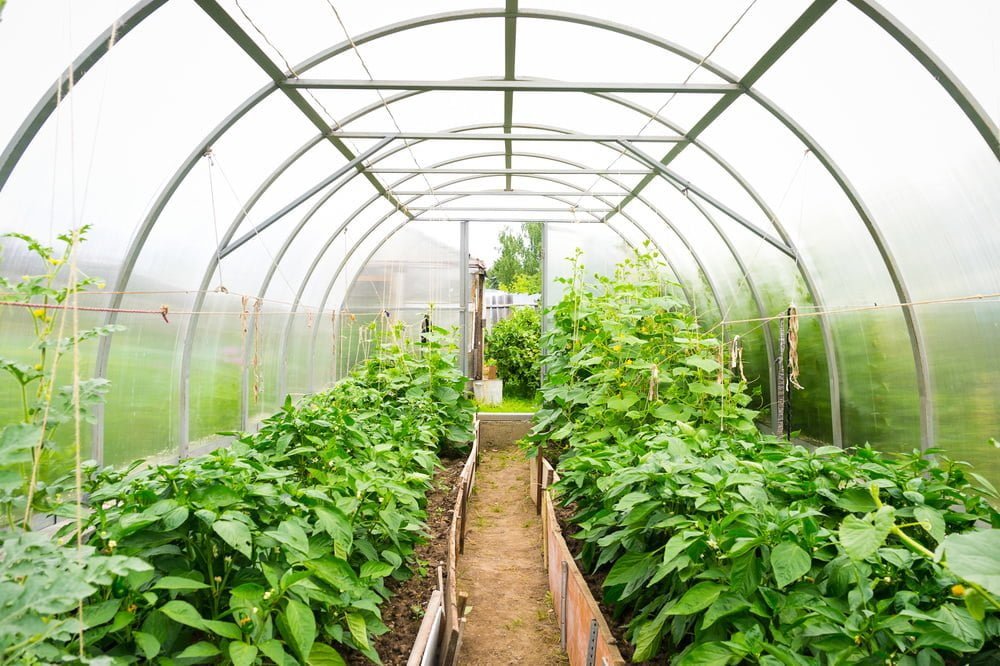Did you know that many winter vegetables can thrive in an unheated greenhouse garden?

Here in Northern Utah, a plastic-skinned, unheated greenhouse can get pretty cold at night. Consequently, not every type of plant can survive the plummeting temperatures. Some cold-hardy vegetables actually grow quite well in a winter greenhouse garden, however, providing a fresh bounty for your family’s table throughout the coldest of months.
Root Winter Vegetables Grow Well in Your Cold Weather Greenhouse
Did you know that the cold Utah winter temperatures can stimulate the sugar production in some root vegetables? This helps to protect their roots from freeze damage while giving them a delightful boost in sweetness.
Carrots, beets, radishes and turnips can all survive frosts and freezing temperatures. You can also plant onions and garlic with confidence.
But you don’t have to stick to the common root vegetables. Why not try planting leeks, parsnips or rutabagas in your unheated winter greenhouse? If you don’t typically leave room for these tasty varieties in your summer garden, a winter planting will give you a chance to experiment with new recipes.
Green Winter Vegetables to Consider for Your Unheated Greenhouse
Many types of leafy, green vegetables can thrive in a winter greenhouse.
Do you crave fresh salads during the winter months? Many varieties of lettuce are sensitive to freezing but some types, such as endive and radicchio, are rugged enough to tolerate the cold. Kale and Swiss chard can also grow quite vigorously in these conditions.
Spinach, arugula and cabbage are other options for tough plants that can survive a Utah winter. Likewise, collard and mustard greens grow well in an unheated greenhouse.
But what if you crave more than just leafy greens?
Plant some cold-hardy broccoli, celery or peas. Or, consider the always-popular option of Brussels sprouts. You could also start a permanent asparagus bed this year. You’ll have to wait a couple of years for your first harvest but you’ll have a new winter vegetable crop every year thereafter.
Tips for Good Winter Vegetable Growth in Your Greenhouse
Just as you would for an outdoor vegetable garden, you’ll need to space your plants properly to maximize growth.
If you prefer containers for planting your winter vegetables, space them far enough apart so that the plants’ leaves don’t touch. If you prefer raised garden beds in your winter greenhouse, make sure to thin out the weak plants as they grow. That way, the hardier plants have plenty of room to thrive.
If you notice any signs of disease in your winter vegetables, remove them promptly to prevent the problem from spreading. To keep pests under control, you may want to interplant some naturally-repellant marigolds. Or, you can purchase ladybugs and praying mantis egg cases, both of which are beneficial for greenhouse growing any time of the year.
As cold as it may be outside in Northern Utah, the temperature inside your greenhouse may be higher than you think during the day. On sunny days, it can become hot enough to stress some winter vegetables. To prevent any potential problems, make sure plenty of air is moving throughout the greenhouse space. Opening the doors can provide ventilation, or you may want to consider adding a fan.
In Salt Lake City, Millcreek Gardens has all of the indoor and outdoor plants and gardening supplies you need to grow a bountiful garden, winter or summer. Stop by and see us today to learn more about growing winter vegetables in Utah.


